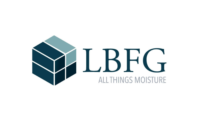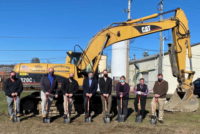Building expansion joints are often required to allow for various types of building movement. These joints cut completely through the building to allow the segmented pieces to move independently from each other. The joint goes through all portions of the building, including the exterior walls and roof. It is important to use an expansion joint cover to bridge the joint, which keeps things like water and debris out to allow the building to move as designed. The exterior building expansion joint can cause major issues if it’s improperly installed or neglected in the planning phase.
Proper planning begins with understanding how both the joint and the cover should function. Determine the nominal joint size and its movement in order to choose the best cover type. For the most part, factory manufactured covers should be used on joints 1 inch and larger, while smaller joints may be closed off with backer rod and sealant or pre-cured silicone sheet. The larger manufactured covers can be made weathertight in a variety of ways. Selection of exterior wall covers can include compression seals, pre-compressed foams, rubber and rail systems and metal covers with moisture barriers.
Compression Seals
Compression seals are commonly used in parking garages as a traffic seal, but they can also be used vertically. This rubber seal is sized slightly larger than the joint and held in place by compression when placed in the smaller joint. Epoxy is often used to help keep compression seals in place under pressure or tension. Because compression seals are more commonly used in parking garages, many manufacturers only carry them in black. This means they may not blend in with the building design or other building surfaces. These covers are designed to work in joints 1 to 4 inches.
Pre-compressed foams are a popular choice for joints 1 to 4 inches and can be used in some larger joints. While compression seals are sized larger than the joint, pre-compressed foam is compressed to a size smaller than the joint and then expands to the joint size during installation. The foam used for the system is impregnated with hydrophobic materials and has a silicone face applied at the factory, which makes it a one-piece installation process. The silicone face allows for a wide variety of color options to potentially match other building finishes. The installed product will be the width of the joint, keeping the exposed surface to a minimum.
It should be noted that there are also less-popular versions of foam seals that are not pre-compressed or impregnated. These systems look very much like the pre-compressed version when fully installed, but do not perform the same way. The primary difference in performance between the two is that a non-compressed version has half of the movement capabilities of the pre-compressed seal. The lower-performing product is less expensive but using it in place of the other can be dangerous. If the movement of the systems is not properly accounted for, it can cause product failure in the form of the product splitting apart or pulling away from the wall substrate. Product failure could lead to the system no longer being properly installed and water leakage can occur. Both pre-compressed and uncompressed foam systems work very well in most building finishes as they require no mechanical fasteners and expand to the substrate. This makes them an especially good option when substrates, such as masonry or brick, are not completely smooth.
Primary Seal
Rubber and rail systems utilize a primary seal and a secondary seal that fit into extruded aluminum rails, with the rails being installed to the exterior wall on either side of the joint opening with mechanical fasteners. The primary seal is ribbed in a manner to allow it to expand and contract, and usually made of a material like thermoplastic rubber. Because the primary seal is visible, it is usually made in a handful of standard colors or in a custom color to match surrounding building finishes. The design of the ribs and the coloring allow the system to blend in well with an exposed surface equal to that of the joint. While the primary seal acts as the main defense against moisture, a secondary seal is required to back it up. This seal is not only a secondary seal, but is also ties the system together with the roof cover at the top of the wall.
This system is most practical when used in joints 4 to 16 inches, although it can be made smaller or larger. It can be installed in many building finishes, but because the rails are a rigid aluminum, the system does require the adjacent substrate surface to be fairly flush.
It may be necessary to use a metal system with a moisture barrier in areas that require larger joint systems for seismic movement. These systems are held in by rails attached with mechanical fasteners, where a turnbar is connected to the frames with the cover attached to the turnbar.
When the system moves, the turnbar keeps the center plate in place and scissors behind it, which allows the building to move. To make this type of system moisture tight, a moisture barrier placed as a drape behind the system. The drape allows for extra material to be inside the joint so that when opened, the moisture barrier can open along with the joint. Reinforced polyethylene sheet is often used as the moisture barrier due to its high tensile strength and puncture resistance. These types of systems work well in joints larger than 4 inches and in most substrates. They are most often used in areas that require a durable cover because they are wider than the joint the covers and can be painted to blend in.
Pan-type System
Another cover version for larger joint systems is a pan-type system, which can be used in joints larger than 8 inches. This system works like a door and is often used where it is highly visible and minimum cover exposure is desired. The pans are designed to accept many building finishes, including metal panels. The pans are attached to the building via frames and have a hinge so that during high levels of movement, the pan can swing free from the building so that the finishes are not damaged. When the cover swings free, the system has a secondary moisture barrier made of reinforced polyethylene to keep water out.
It is also important to close off the horizontal roof joint, even though the vertical exterior wall joint is the most visible because it cuts through the building. Manufactured roof expansion joint covers come in two forms. The first form is a simple bellows. Bellows expansion joint covers are usually a half circle shape that bridges the joint and allows for movement. These covers are usually made from EPDM or neoprene and have a layer of foam backing for support. They are attached to a curb or cant using metal flanges that are factory applied on either side of the half circle. Bellows expansion joint covers should be elevated from the roof membrane level when installed to avoid water ponding on or near the flanges. A secondary drape of reinforced polyethylene can be used as a moisture barrier. This system is best used in roof applications where the joint is smaller than 6 inches and does not have directional changes.
Larger joints that require directional changes can be covered with the second type of roof expansion joint cover—a metal cover plate. This system utilizes frames and turnbars in the same manner as the exterior metal wall expansion joint cover. The center plate is peaked to discourage water ponding and is attached to the turnbar. The turnbar is connected to the frames, which are designed to sit on a curb or cant, again elevation from the roof membrane level is critical. The turnbar will allow this cover to move further in compression, tension and lateral shear. The bellows expansion joint covers do not allow for these same types of movements. This system has a secondary seal made of reinforced polyethylene sheet, which can either be sloped for drainage at the edge of roof or connect drain tubes to the drainage plumbing. Metal covers that exceed 16 inches should be specially designed by a manufacturer so that they can be properly fabricated to withstand forces applied by wind.
Although there are many options for roof and exterior wall expansion joint covers, proper selection comes down to having some basic knowledge of expansion joint covers. You can then begin looking into the specific system that meets the criteria for your application. Understanding expansion joint covers and making an informed decision will ensure water leakage will not be an issue.






Report Abusive Comment